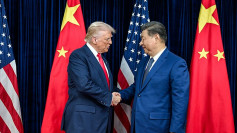From global cooperation on the economy, China turns futuristic as it appeals to countries to cooperate with each other in experiments done on its planned space station.
Xinhua Net reveals the Committee on Science and Technology Experiments of the Chinese Space Station led the appeal for collaboration. The Committee is a recently-established branch answering to the China Academy of Space Technology (CAST).
As to the collaboration, China is offering the international community the chance to contribute to the effort. Through a website, China can receive different proposals and potential projects that can be studied and done in the planned space station. These projects and proposals will be reviewed by the China Manned Space Agency.
CAST isn't only looking at experiments; satellites and spacecraft are the main concern for any space agency. The CAST is looking to create new designs, hear new ideas, and study if these will work through international cooperation.
Quartz, meanwhile, looks at what China's first space station will eventually look like.
The Chinese space station will be made up of three modules. These will then be joined together in a T-shaped configuration. The initial design was revealed by the China Manned Space Agency as well as the UN Office for Outer Space Affairs. The space station will weigh one-sixth of the weight of the Internation Space Station. There will be additional weight if and when manned spaceships and cargo vessels dock with the station.
It was only last year that the first module of the space station was completed. Dubbed Tianhe-1, meaning "harmony of the heavens," the first module is created to serve as the core of the space station. It is going to be the astronaut's living quarters for the meantime, as the space station is completed piece-by-piece.
China's appeal for international cooperation has yet to reach the US, apparently. The Chinese space station is being built without help from the ISS, where the US is one of the leading members. This is another effect of the Trump administrations concerns about tech transfer and, to that extent, national security.
To rouse interest for contributions, China initiated the Youth Program of Scientific Education Experiment on the Chinese Space Station. To date, it has already received 200 youth education experiments from across the nation. Only 30 projects were selected from the initial list.





